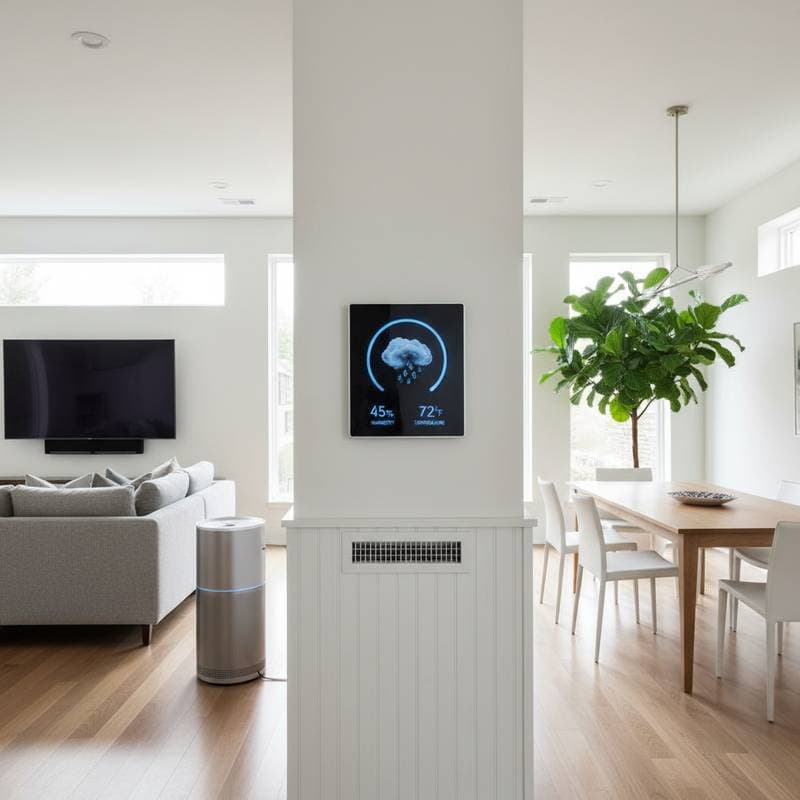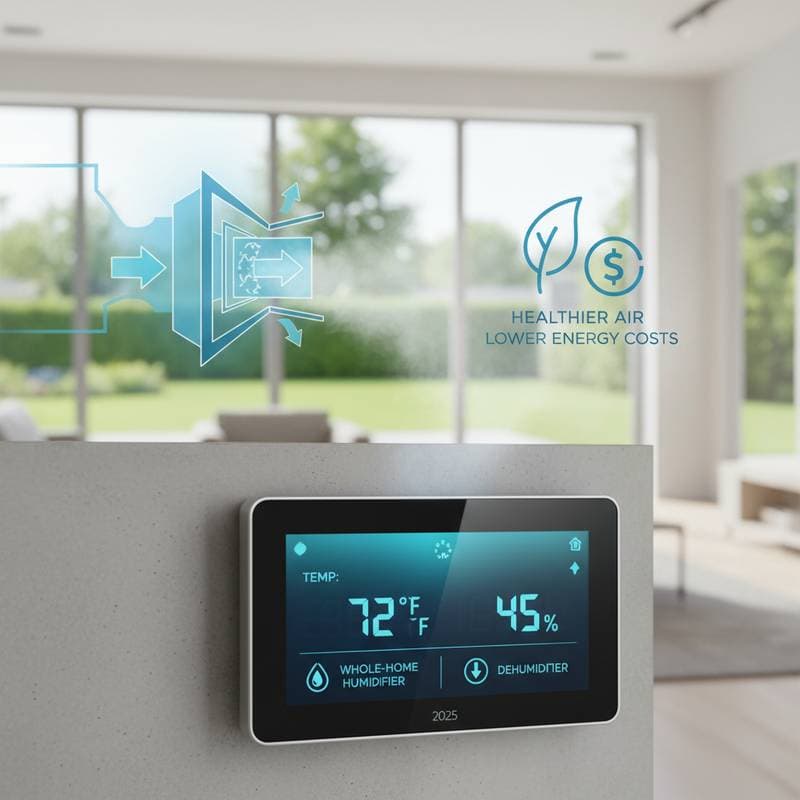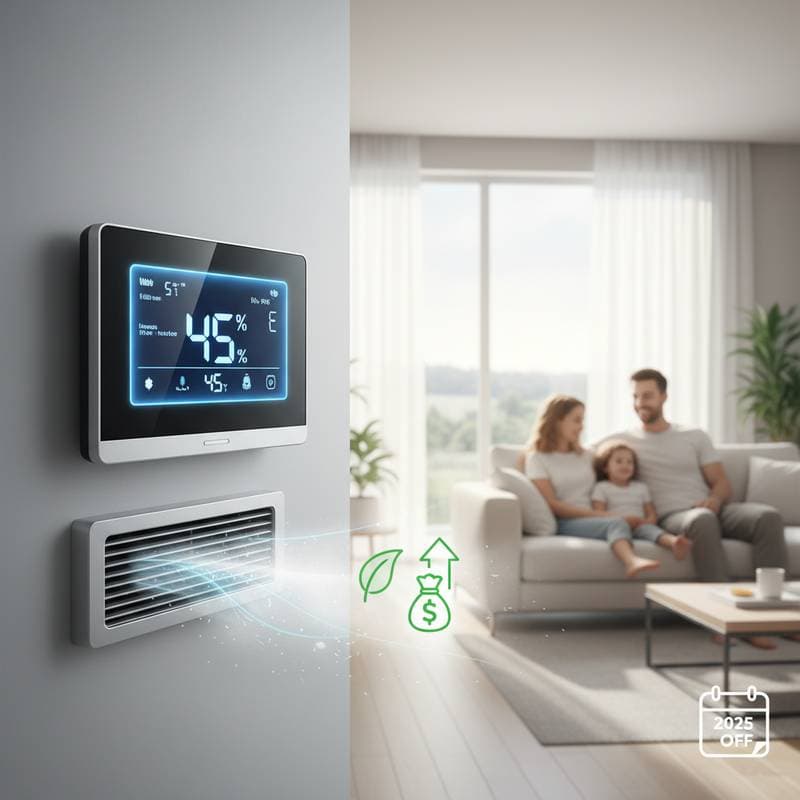Why Humidity Matters More Than Temperature for Home Comfort
Homeowners often focus on temperature settings to achieve comfort, yet humidity plays a more profound role in creating a pleasant indoor environment. High humidity levels make warm air feel stifling, while low humidity leads to dry, uncomfortable conditions that exacerbate health issues. Balancing moisture in the air ensures that spaces feel refreshing and supportive of daily well-being.
Excessive indoor humidity fosters mold growth and allergens, which can trigger respiratory problems. Conversely, overly dry air irritates skin, eyes, and airways, leading to discomfort during heating seasons. Professional assessments reveal that maintaining relative humidity between 30 and 50 percent aligns with guidelines from health organizations, promoting a healthier living space.
Energy efficiency also hinges on humidity management. Systems that address moisture reduce the workload on air conditioners and heaters, leading to lower utility bills. For instance, dehumidification allows thermostats to run at higher temperatures in summer without sacrificing comfort, cutting energy use by up to 20 percent in humid climates.
Safety Measures: Never attempt to modify refrigerant lines or electrical components on your own. Always rely on licensed professionals to handle installations and repairs, ensuring compliance with safety standards and preventing hazards.
As HVAC technician Jordan Hale explains, "Humidity control isn’t just about gadgets. It’s about designing a system that breathes with your home, adapting to its rhythm and needs."
The Health Benefits of Optimal Humidity Levels
Maintaining proper humidity directly impacts occupant health. In humid conditions, excess moisture creates breeding grounds for dust mites and bacteria, contributing to allergies and asthma flare-ups. Dehumidifiers counteract this by extracting water vapor, keeping air clean and reducing the risk of structural damage like warped wood or peeling paint.
During winter, low humidity dries out mucous membranes, making individuals more susceptible to colds and infections. Whole-home humidifiers introduce controlled moisture, alleviating these symptoms and preserving items like furniture and artwork from cracking. Families notice fewer complaints of chapped lips or static electricity once levels stabilize.
Studies from environmental experts underscore that balanced humidity supports better sleep and concentration. Children and elderly residents benefit most, as stable conditions minimize dehydration risks and enhance overall vitality. Integrating humidity-focused HVAC upgrades thus serves as a proactive step toward long-term wellness.
Energy Efficiency Through Advanced Humidity Management
Traditional HVAC systems prioritize temperature, often overlooking how humidity affects perceived comfort. Variable-speed compressors in modern units adjust output precisely, removing moisture efficiently without overcooling rooms. This targeted approach conserves energy, as the system cycles less frequently and maintains steady conditions.
Smart ventilation systems exchange stale, humid air with fresh outdoor air when conditions allow, further optimizing performance. Homeowners in coastal or tropical regions see the most gains, where high ambient humidity challenges older equipment. Upgrading to these technologies typically yields a return on investment within three to five years through reduced operational costs.
Duct sealing and insulation enhancements complement humidity controls by preventing moisture infiltration. Professionals evaluate airflow patterns to eliminate leaks, ensuring that conditioned air reaches living areas without waste. These measures not only lower bills but also extend the lifespan of HVAC components by minimizing strain from inconsistent loads.
How Smart Technology Enhances Humidity Control
Smart home integration transforms HVAC management into an intuitive process. Advanced thermostats track both temperature and humidity in real time, using algorithms to predict and adjust based on occupancy patterns. Users receive mobile notifications about deviations, enabling timely interventions before discomfort arises.
Integrated sensors in return air ducts provide granular data, allowing systems to activate dehumidification modes automatically during rainy seasons or humid evenings. Compatibility with voice assistants simplifies control, so residents can request adjustments without navigating complex interfaces. This level of automation fosters a responsive environment that aligns with lifestyle demands.
Proactive maintenance features, such as filter life indicators and humidity trend reports, empower homeowners to stay ahead of issues. Regular software updates refine performance, incorporating weather forecasts to preemptively balance indoor conditions. As a result, homes equipped with these tools achieve consistent comfort with minimal manual oversight.
Practical Solutions for Humidity Balance
Whole-home humidifiers connect directly to furnace systems, dispersing fine mist through ducts to combat winter dryness. These units operate quietly and integrate with existing setups, requiring only periodic water refills. For summer challenges, standalone or integrated dehumidifiers target basements and high-moisture areas, preventing mildew and odors.
Hybrid systems combine heating, cooling, and moisture control in one efficient package. Variable-capacity units modulate speed to match demand, avoiding the energy spikes of on-off cycling. Local climate influences the best choice; experts recommend zoning for multi-story homes to address varying needs across rooms.
Installation involves assessing square footage, insulation quality, and ventilation. Certified technicians calibrate devices to avoid over-humidification, which could lead to condensation issues. Many models feature user-friendly interfaces for monitoring, ensuring long-term satisfaction and ease of use.
Steps to Achieve Balanced Indoor Comfort
Begin with a comprehensive indoor air quality evaluation. Professionals use hygrometers to measure current humidity and identify sources of imbalance, such as poor ventilation or leaks. This diagnostic step informs customized recommendations, avoiding one-size-fits-all solutions.
Next, consider integrating smart controls if your system lacks them. Retrofitting options exist for older units, providing modern benefits without full replacement. Budget for annual maintenance to sustain performance, as clean coils and filters are essential for effective moisture removal.
From years in the field, observations show that targeted humidity adjustments yield noticeable improvements. Residents report fewer allergy episodes, stable energy costs, and a sense of freshness throughout the home. The result is an environment that supports relaxation and productivity without constant adjustments.
Contact a qualified HVAC specialist for a personalized consultation and quote. Explore options like energy-efficient dehumidifiers and adaptive thermostats suited to your region, paving the way for enhanced comfort and savings.
Frequently Asked Questions
How do I know if my home needs better humidity control?
Signs include condensation on windows, persistent musty odors, or symptoms like dry skin and irritated eyes. These indicate imbalances that affect comfort and health. A professional assessment with specialized tools provides precise measurements and tailored advice.
Are whole-home humidifiers and dehumidifiers expensive to run?
These devices consume little power, with monthly costs typically under five dollars. Efficiency gains from optimized HVAC operation often exceed this expense, leading to net savings on energy bills over time.
Can humidity control improve my home's energy efficiency?
Yes, by allowing higher thermostat settings in summer and lower in winter without discomfort. Systems that manage moisture reduce runtime, potentially saving 10 to 30 percent on heating and cooling costs annually.
What maintenance do humidity control systems require?
Routine tasks include cleaning water reservoirs and replacing filters every three to six months. Professional tune-ups once a year ensure optimal function and prevent issues like mineral buildup.



